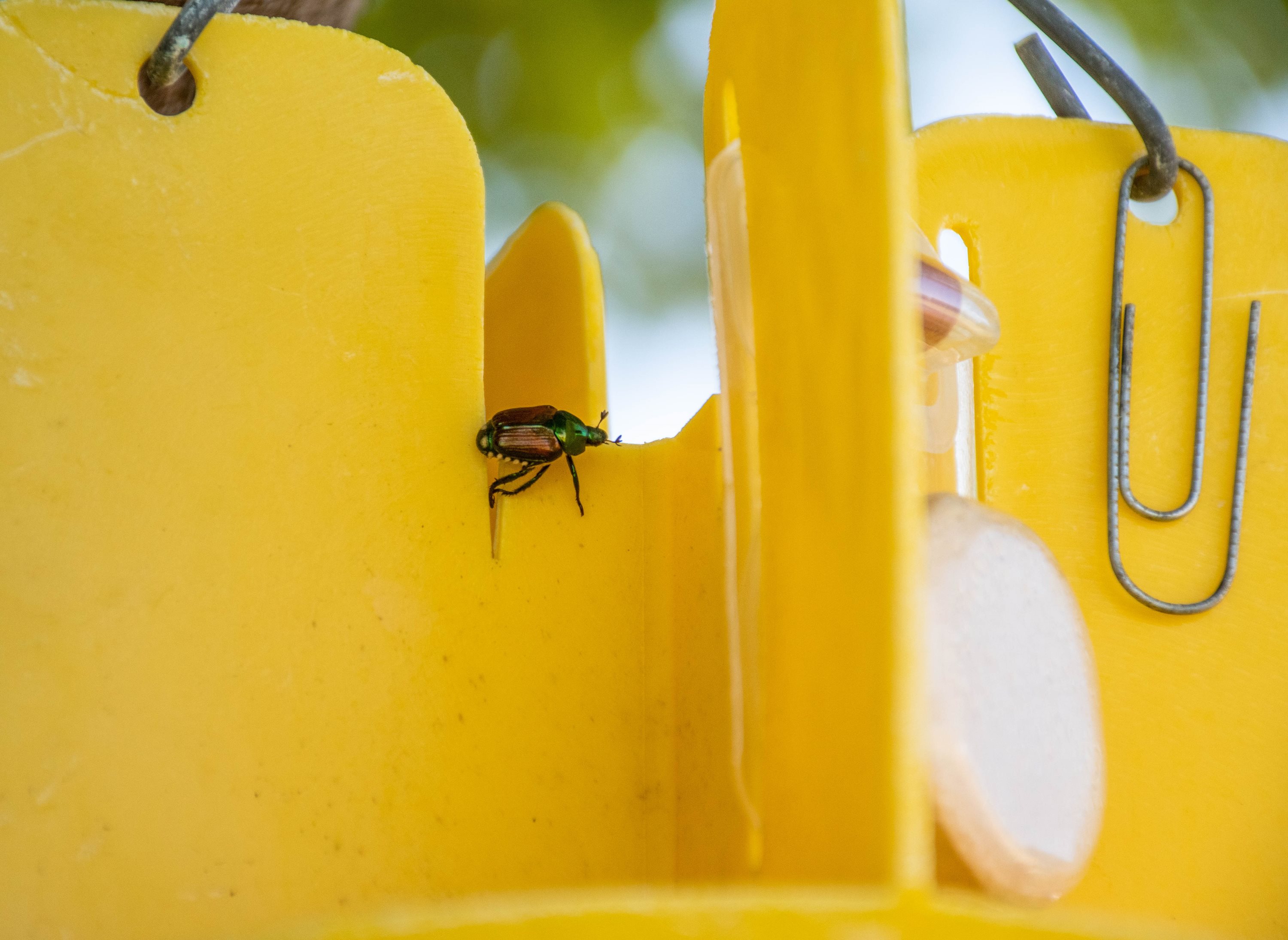

How you can help
Capture Beetles
You can also trap.Traps contains floral scents and a pheromone to lure Japanese beetles. The pests fall and are captured in the bag. This helps prevent them from laying eggs which can lower their future population.
- You can capture beetles yourself and place a trap.
- If you place a trap, remember to keep it on your property.
- Check your trap periodically and service it as needed.
- A wide variety of traps are available online, and at your local home and garden stores. Traps vary in design, so follow the instructions provided.

Report collections
You can report your collections online or leave beetles at a drop off location.
-
Count your beetles, take a picture and report the collection online to the Japanese beetle watch. Once the beetles are completely dead, they are safe to discard.
or
-
Place your beetles in a bag and include the location of where the beetles were collected. Leave your collection at one of the drop-off locations listed below.
Name Address Hours Wapato City Hall 205 E 3rd St, Wapato, WA 98951 M-Th 7:30 a.m. - 4 p.m. Educational Service District 123 3924 W Court St, Pasco, WA 99301 M - Fri 7:30 a.m. - 4 p.m. Pasco City Hall 525 N 3rd Ave, Pasco, WA 99301 M - Fri 8 a.m. - 5 p.m. WSU Extension, Kennewick Office 7102 W Okanogan Pl, Kennewick, WA 99336-2341 M - F 8 a.m. - 4 p.m. WSU Extension, Union Gap Office 2403 S 18th St, Yakima, WA 98903 M - F 8 a.m. - 4 p.m. WSDA Office 21 N 1st Ave Ste 103, Yakima, WA 98902 M - F 8 a.m. - 4 p.m.
